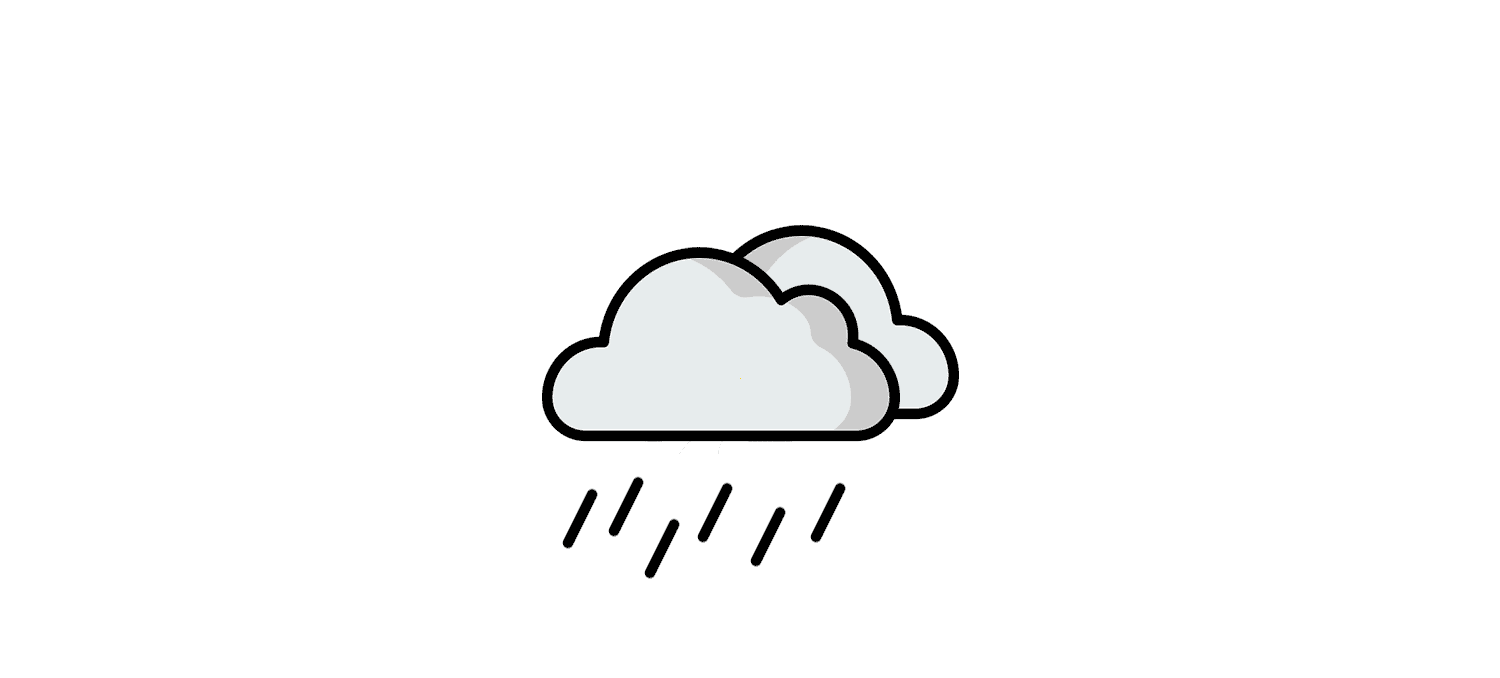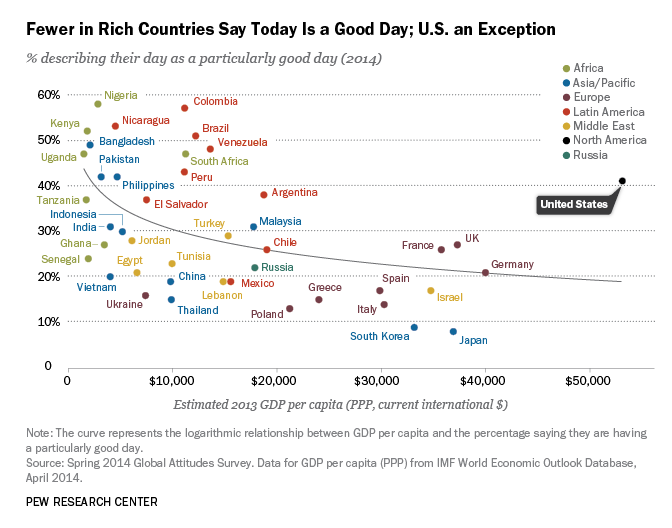The Upside of Defensive Pessimism in Times of Crisis
Written on

“An Unforeseen Problem”
With the COVID-19 virus now present in nearly every nation and spreading across all U.S. states, there has been a drastic shift in public concern. Just weeks prior, many believed the virus posed no more threat than the seasonal flu. Notably, certain conservative figures had downplayed the risk, with Fox News' Jesse Watters suggesting earlier this month that the threat was minimal.
“If I catch it, I’ll overcome it. Honestly, it’s about positive thinking, and America should embrace that.”
However, the reality became undeniable as the nation confronted an unprecedented global pandemic and an economic crisis. Shortly after, Watters retracted his previous stance, admitting, “I realized that was a mistake. I’m not dining out anymore.” Many individuals who once insisted on maintaining their routines found themselves staying at home.

While Watters’ comments were certainly misguided, it is worth noting that global leaders were projecting an air of confidence regarding the containment of the virus. In early March, the WHO had yet to declare a pandemic, suggesting that the coronavirus could still be managed. Larry Kudlow, head of the National Economic Council, echoed this sentiment by claiming, “I still argue that this is contained.”
U.S. President Donald Trump was particularly optimistic, consistently portraying the situation in the best possible light.
> January 30: “We have very little problem in this country right now — five cases — and they’re all recovering well. We’re collaborating closely with China and other nations, and I assure you, it will end positively for us.”
> February 19: “I anticipate the numbers will improve as we progress.”
> February 23: “We have it largely under control in this country.”
> February 26: “When you have 15 people, and that number will soon be close to zero, that’s impressive progress.”
> March 9: “Last year, 37,000 Americans died from the flu, which averages between 27,000 and 70,000 annually. Life continues as normal. Currently, there are 546 confirmed cases of COVID-19 and 22 deaths. Consider that!”
Even after the pandemic declaration, as cities and states began to implement closures and social distancing measures, Trump's public remarks remained rooted in an unwavering belief that everything was proceeding optimally.
> March 17: “We’re providing assistance to affected sectors and businesses, ensuring we will emerge from this challenge with a thriving economy. One day we’ll say, ‘We won,’ and I believe we will achieve that sooner than expected.”
> March 24: “I hope we can see some progress by Easter. That would be wonderful for our nation. Easter is significant for many, and it would be an ideal timeline.”
Despite Trump’s assertion that this crisis “came out of nowhere,” the rapid spread of the virus should not have been unexpected for those paying attention.
On February 24, The Atlantic released an article titled “You’re Likely to Get the Coronavirus,” presenting a starkly different viewpoint than the prevailing optimism. The article highlighted the challenges of containing a highly infectious virus, emphasizing the ease with which it could spread. While Trump was downplaying the situation, Harvard epidemiologist Marc Lipsitch estimated that “100 to 200 people in the U.S. were already infected,” contributing to a spread that would soon exceed 75,000 confirmed cases.
Lipsitch predicted that within the next year, between 40 to 70 percent of the global population might contract the virus, stating, “It is unlikely to be containable.” Accepting the idea that no area would be free from the virus is essential; COVID-19 should be viewed as a collective issue.
Although late February may not seem distant, it was around this time that Trump was confidently asserting, “We have it very much under control.” That week also saw Joe Biden outperform expectations in the South Carolina Democratic primary, shifting the narrative from underdog to frontrunner. COVID-19 was then merely another passing virus, expected to fade over time.
The Power of Positive Thinking
Our inclination towards normalcy often leads us to overlook early signs of significant disruption. Yet, the question arises: why was the federal government, responsible for predicting and mitigating disasters, caught off guard? Why was Trump so optimistic that he failed to recognize the impending crisis?
The roots of this mindset can be traced back to 1952, when Norman Vincent Peale published The Power of Positive Thinking: A Practical Guide to Mastering the Problems of Everyday Living. This best-selling book promotes achieving a consistently optimistic outlook through positive affirmations and visualizations. Among its initial rules are:
- Picture yourself as succeeding.
- Think a positive thought to counter a negative thought.
Peale, a minister and pastor of Marble Collegiate Church in New York, had a significant influence on Trump, who attended Peale's sermons as a child. Their relationship continued throughout Trump’s life. This perspective is evident in Trump’s rhetoric, where he insists that everything he does is extraordinary. “The mind can overcome any obstacle,” Trump stated in a 1983 interview. “I never consider the negative.”
Trump is not an anomaly; throughout modern American history, numerous figures—politicians, religious leaders, and influencers—have championed positive thinking. The belief that supreme confidence and visualization lead to success has permeated American culture, often epitomized by Henry Ford’s adage: “Whether you think you can or you can’t — you’re right.”

A 2014 Pew Research Center survey indicated that Americans stand out among similarly wealthy nations for the proportion of respondents who reported having a good day. In Europe, only 17% claimed to be having a good day, while 76% described it as average. In contrast, 41% of Americans reported having a good day, with slightly more indicating it was merely typical.
However, as we delve deeper into cognitive strategies, it becomes clear that optimism can have negative consequences. A 2015 study by researchers from the University of Birmingham examined the “Costs and Benefits of Realism and Optimism,” comparing the two cognitive states—depressive realism and unrealistic optimism. They defined “unrealistic optimism” as a broad concept encompassing several biases, including:
- Better than average effect: Individuals believe they are more virtuous, talented, and compassionate than others and less error-prone.
- Illusions of self-control: Individuals believe they can control events outside their influence, especially when personally involved.
- Overoptimism or optimistic bias: Individuals underestimate their likelihood of experiencing negative outcomes, like accidents or serious diseases.
- Illusions of superiority: Individuals overrate their performance compared to others across various domains.
While positive thinking can foster individual well-being and sometimes enhance task performance, it can also lead to recklessness in the face of potential dangers, particularly regarding health risks that accumulate over time. The authors noted, “Underestimating health risks and failing to adopt preventive measures can yield significantly negative consequences.”
Defensive Pessimism
If optimism presents drawbacks, it stands to reason that pessimism might offer advantages. In 1986, Julie K. Norem and Nancy Cantor published Defensive Pessimism: Harnessing Anxiety as Motivation in the Journal of Personality and Social Psychology. Their research focused on how individuals use coping strategies to navigate risky situations, particularly through anxiety and low expectation management.
Their study involved two experiments assessing students' tendencies towards optimism or pessimism through self-reported questionnaires. Participants then completed a 15-minute tracing puzzle and subsequently rated their perceived control, performance, and satisfaction.
Contrary to some expectations, while pessimists expressed lower satisfaction and a higher need for improvement, their performance matched that of optimists. More importantly, when pessimistic participants were told they would excel, their performance declined. In the second experiment, groups were labeled “encouraged” and “non-encouraged.” The former received positive feedback regarding their past performance, yet those with pessimistic tendencies performed worse when encouraged.

The findings indicated that telling anxious individuals not to worry is unhelpful. The researchers concluded that encouragement disrupted the defensive pessimism strategy, which involves setting low expectations to prepare for potential failure and motivate hard work to avoid it. This strategy allows individuals to manage anxiety productively by preparing for possible setbacks rather than suppressing doubts.
Defensive pessimism involves a cognitive strategy of anticipating unfavorable outcomes and devising actionable plans to mitigate them. For example, a defensive pessimist planning a vacation would prepare for scenarios like lost luggage, canceled reservations, or home emergencies, whereas an optimist may simply assume everything will go smoothly.
“This strategy functions defensively, preparing individuals for potential failure.”
This phenomenon of lower expectations leading to better outcomes has been observed in various contexts:
- Couples who are overly optimistic about their relationships are more likely to experience deterioration.
- Individuals who underestimate their heart disease risk may show early signs of the condition.
- Homeowners with unrealistic views of radon exposure are less likely to purchase testing kits than those with a more accurate risk perception.
- A 30-year study of over 10,000 Germans found that older adults who underestimated their future satisfaction were less likely to experience disability or premature death.
The latter study, Forecasting Life Satisfaction Across Adulthood: Benefits of Seeing a Dark Future?, found that while current life satisfaction was consistent across age groups, younger adults tended to overestimate their future satisfaction, while older adults underestimated it. Notably, underestimating future life satisfaction was linked to lower risks of disability and mortality, even when accounting for other variables.
The researchers suggested that accepting or anticipating future challenges may encourage individuals to take necessary precautions, serving as a form of predictive control.
In recent discussions, Trump has suggested lifting federal recommendations against gatherings and non-essential travel soon. “I envision packed churches on Easter Sunday,” he stated in an interview. Meanwhile, health experts, including Lipsitch, argue that social distancing must continue for months to sustain the healthcare system and minimize fatalities. Their approach is grounded in epidemiological data rather than blind optimism.
Larry Jameson, Dean of the University of Pennsylvania's School of Medicine, emphasized that health leaders are conducting best- and worst-case scenario analyses based on infection rates and hospital capacity. He urged the continuation of strict distancing measures to manage the virus's rapid spread, which occurs from person to person.
We cannot rely solely on positive thinking to navigate this crisis. Instead, we must confront potential worst-case scenarios and formulate actionable strategies to mitigate them. This is a challenge that cannot be solved by confidence alone; a degree of pessimism, combined with proactive measures, may be essential.